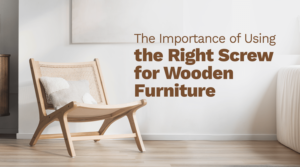The world of architecture and interior design continues to evolve rapidly, driven by advancements in technology and a growing awareness of sustainability. Smart and efficient design has emerged as a key focus, revolutionizing the way we build and live in spaces. Let’s explore the top trends in smart and efficient design for 2023 and how they are shaping the future of construction and interior spaces.
Embracing Sustainable Materials: Green Building for a Greener Future
Sustainability has become a central pillar of modern design practices. In 2023, there is a strong emphasis on using eco-friendly and sustainable materials in construction. Builders and architects are exploring innovative alternatives to traditional materials, such as bamboo, reclaimed wood, recycled plastic, and other low-carbon options.
Green building practices not only reduce the environmental impact of construction but also promote better indoor air quality and healthier living environments. The adoption of sustainable materials is a step towards a greener future, creating spaces that are not only beautiful and functional but also eco-conscious.
Integrating Smart Home Technology: Enhancing Comfort and Convenience
In the era of the Internet of Things (IoT), smart home technology has taken center stage in modern design. In 2023, homes are becoming increasingly connected and intelligent, offering enhanced comfort and convenience to residents. From voice-activated assistants and automated lighting to smart thermostats and security systems, technology is seamlessly integrated into the fabric of our living spaces.
Smart home technology allows for greater control and personalization, enabling homeowners to manage their environments effortlessly. Whether adjusting the temperature remotely or setting up automated routines, these advancements in technology enhance the overall living experience, making homes more efficient and responsive to our needs.
Energy-Efficient Solutions: Reducing Carbon Footprint and Utility Costs
Energy efficiency is a critical consideration in smart and efficient design for 2023. With a growing concern about climate change and rising energy costs, architects and designers are prioritizing solutions that reduce carbon footprints and utility expenses.
Buildings are now being designed with better insulation, energy-efficient windows, and energy management systems that optimize energy consumption. Renewable energy sources such as solar panels and geothermal heating and cooling systems are also being integrated into the design, further reducing reliance on non-renewable resources.
Maximizing Space with Multi-Functional Design
As urban areas become more densely populated, space optimization becomes a top priority in smart and efficient design. Multi-functional design strategies are gaining popularity in 2023, as they allow spaces to adapt to various needs and functions.
Furniture with built-in storage, convertible pieces, and modular designs enable homeowners to make the most of limited square footage. Flexible layouts that can transform from workspaces to relaxation areas or guest rooms to playrooms add versatility to interior spaces.
Optimal Natural Light and Ventilation: Harnessing Nature’s Benefits
In 2023, designers are recognizing the significance of natural light and ventilation in creating healthy and pleasant environments. The integration of large windows, skylights, and open floor plans allows for ample natural light to flood interior spaces.
Optimal natural light not only reduces the need for artificial lighting during the day but also contributes to the occupants’ well-being and productivity. Additionally, strategic ventilation systems and well-placed airflow allow for improved indoor air quality, ensuring a healthier living environment.
Smart Appliances and Automation: Streamlining Daily Living
The rise of smart home technology has also extended to appliances and household systems. In 2023, smart appliances are gaining popularity, offering automation and remote control features that streamline daily living.
From smart refrigerators that create shopping lists to self-regulating washing machines and programmable coffee makers, these appliances enhance efficiency and convenience in the home. The ability to control and monitor these devices from a smartphone or voice-activated assistant adds an extra layer of ease to daily routines.
Future-Proofing with Modular and Flexible Design
With technology and lifestyle preferences constantly evolving, future-proofing has become a central concern in smart and efficient design. In 2023, the focus is on modular and flexible design that can adapt to changing needs and preferences over time.
Modular construction allows for more efficient building processes, reducing construction waste and enabling faster project completion. Additionally, flexible interior layouts and adaptable spaces accommodate changing family dynamics or business requirements, ensuring that the design remains relevant and functional for years to come.
Incorporating Biophilic Design: Connecting with Nature Indoors
Biophilic design, which emphasizes the integration of natural elements into indoor spaces, has gained significant momentum in 2023. The incorporation of plants, natural materials, and organic shapes brings a sense of connection with nature to urban environments.
Biophilic design has been shown to improve mental well-being, reduce stress, and enhance productivity. It also helps to create more inviting and harmonious interiors, fostering a positive atmosphere that resonates with occupants.
The Human-Centric Approach: Designing for Well-Being and Productivity
In 2023, the human-centric approach takes center stage in smart and efficient design. Designers are prioritizing the needs and well-being of occupants, creating spaces that support physical health, mental well-being, and productivity.
Ergonomic furniture, flexible workstations, and spaces that promote movement and collaboration are integrated into workplaces to enhance employee comfort and productivity. In residential settings, calming color palettes, comfortable furniture, and designated relaxation areas contribute to a more tranquil and nurturing atmosphere.
Conclusion
In conclusion, 2023 represents a turning point in the evolution of smart and efficient design. With an increasing focus on sustainability, technology integration and human-centered approaches, the design industry is embracing innovations that improve our quality of life and reduce our environmental impact. Much of this is thanks to the incorporation of floor plan software that allows for the preview of projects prior to execution. Embracing sustainable materials and energy-efficient solutions, harnessing natural light and ventilation, and adopting smart home technology are key trends shaping the future of construction and interior spaces. By future-proofing designs with modular and flexible solutions, incorporating biophilic elements, and prioritizing the well-being and productivity of occupants, smart and efficient design is creating spaces that inspire and support us in our daily lives. As these trends continue to gain traction, they hold the keys to building a brighter, more sustainable, and user-centric future.



Be First to Comment